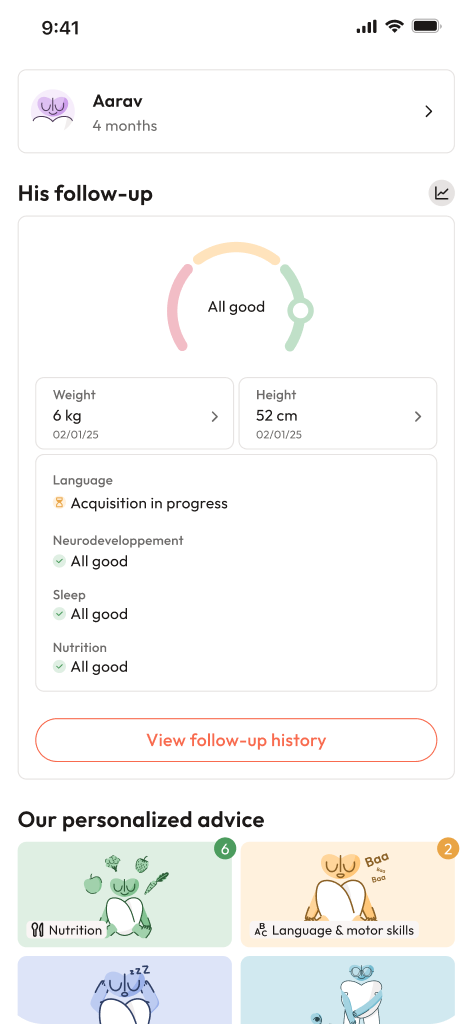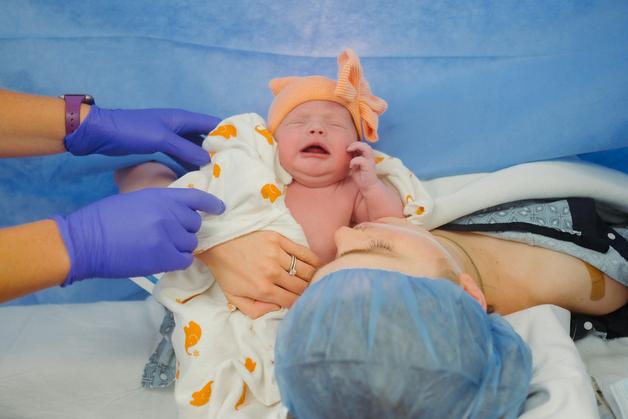When the mind is abuzz with questions and every twinge feels like a potential sign, the search for meaning behind the subtle changes in your body can become all-consuming. For many parents, the window between ovulation and the expected period stretches long, filled with curiosity, a dash of hope, and perhaps just a sprinkle of anxiety. Implantation symptoms—that phrase alone sparks so many questions! Is a slight cramp a significant clue? Does a drop of pink on a tissue carry any weight? Is the sudden surge in fatigue meaningful, or just the toll of a busy week? For some, nothing stands out. For others, the body whispers clues—soft, flickering, easily missed or misread. Here, let’s try to demystify this phase, tracing each possibility with empathy, scientific clarity, and a tone of gentle reassurance. Expect insights on what counts as typical, what’s a red flag, and which steps may smooth the journey.
What Are Implantation Symptoms and Why Do They Happen?
The journey of the fertilised egg is a saga in itself. About 6–12 days after ovulation, the tiny blastocyst—half parent, half miracle—settles into the lush landscape of the uterine lining. Imagine, on a molecular level, a handshake between embryo and endometrium, where enzymes carefully dissolve just enough tissue for entry while hormones such as human chorionic gonadotropin (hCG) and progesterone surge upwards, orchestrating transformation. This dance, though quiet, sometimes announces itself: light spotting, trace cramps, a subtle shift in the usual pattern.
But why does one person sense these changes so clearly while another is oblivious? Factors abound:
- Individual hormone sensitivity—some feel everything, others little.
- Differences in cycle length and the precise moment of ovulation.
- Experiences of prior pregnancies and the body’s memory.
- Presence of conditions such as fibroids or endometriosis, which can alter bleeding or discomfort patterns.
- Medications—especially progesterone support after fertility treatments—can mimic or mask some early signs.
Yet, the science remains steady: no one sign can definitively confirm pregnancy. Only a reliable pregnancy test—blood or urine—gives that clarity.
Common Implantation Symptoms: Decoding the Signals
Spotting or Implantation Bleeding
This is perhaps the classic, most discussed implantation symptom. What sets it apart? The flow is extremely light: often just a pink or brown tint on wiping, rarely enough to fill a pad. It might pop up for a few hours or up to two days, and—despite popular myth—not everyone will see it. Research paints a cautious picture: around 15–25% of pregnancies may include such light bleeding, but recall bias clouds the numbers.
It’s essential not to confuse this with menstrual bleeding. If the flow is bright red, heavy, or brings clots and discomfort, it may be time to consult your clinician.
Mild Lower Abdominal Cramps
Cramping is another implantation symptom that invites endless speculation. What does it feel like? Many describe it as gentle pulling, tugging, or a faint ache low in the belly or back. Unlike menstrual cramps, these twinges are lighter, intermittent, and almost “background noise.” Still, definitions blur—one person’s mild ache is another’s distraction. If discomfort intensifies or lingers, best to check with a healthcare professional.
Breast Changes, Fatigue, Mood Fluctuations
Progesterone rising can make breasts feel fuller, achy, or extra sensitive—sometimes as soon as a week after implantation. Fatigue, that heavy-limbed tiredness, might make even a short walk seem daunting. As hCG builds, so too does emotional lability: some find themselves on an emotional carousel, quick to laughter or tears. Yet, isn’t this the same pattern as PMS sometimes? Absolutely—distinguishing between premenstrual symptoms and implantation symptoms isn’t always straightforward.
Changes in Cervical Mucus and Basal Body Temperature
Observing your own patterns matters. A creamy, white discharge—known medically as physiologic leukorrhea—can increase with hormonal shifts, offering some a gentle clue. A sudden change in odour, colour, or the emergence of irritation, though, signals infection and deserves attention.
Monitoring basal body temperature? A post-ovulation rise that stays high for more than 16 days can be telling, especially with a missed period. Yet beware the “implantation dip”—a much-exaggerated signal whose reliability is questionable.
Timing: When Do Implantation Symptoms Appear?
Understanding DPO (days past ovulation) is key. Here’s a quick map:
- 0 DPO: Ovulation day (fertilisation soon after)
- 1–5 DPO: Embryo travels and divides
- 6–12 DPO: The window where implantation is most likely
- 12–14+ DPO: If pregnancy occurs, the missed period window begins—testing becomes more reliable now
The trick is timing. “Implantation symptoms” felt before 6 DPO are rarely meaningful, and signs after 14 DPO often merge with the earliest pregnancy indicators or simply coincide with the period’s onset.
Duration and Intensity: What Is Typical?
Implantation-related spotting is usually fleeting—never more than one or two days, and cramping fades quickly too. If pregnancy progresses, certain symptoms—breast tenderness, fatigue—may linger or even intensify, but many feel calm seas before the hormonal tide truly rises around week 5 or 6.
Distinguishing Implantation Symptoms from Other Possible Causes
Here’s a perennial parental quandary: are these implantation symptoms or is the period merely knocking? Consider:
- Timing is everything. Implantation signs surface in the late luteal window (6–12 DPO), whereas PMS builds just before the period.
- Bleeding matters. Implantation bleeding is pink or brown, scant, and clot-free. Menstrual bleeding is bright, heavier, and may include clots.
- Persistence provides clues. If symptoms such as breast soreness or fatigue continue past the missed period, pregnancy is more likely; with PMS, these tend to ease off as bleeding starts.
Other scenarios to keep in mind: ovulation pain, which arrives mid-cycle, or infections, which generally partner with foul discharge or fevers—both are rarely confused with implantation symptoms. Still, remain alert to any sudden, severe, or unusual changes.
Unique Scenarios: Fertility Treatments, Multiples, and Medical Conditions
Those navigating IVF or IUI cycles might encounter a different landscape. The use of progesterone, or the timing determined in “days past transfer (DPT),” means some symptoms mimic natural cycles while others are altered entirely. Clinics offer detailed roadmaps, and for any alarming symptoms—heavy bleeding, severe pain—prompt consultation is vital.
Carrying twins? Higher hormone levels might amplify discomfort, but only testing and ultrasound provide confirmation. Ectopic pregnancies, chemical pregnancies (very early pregnancy loss), and the influence of underlying medical or medication factors can all shift the presentation of implantation symptoms. Sharp, localised pain or heavy, fast bleeding: never second-guess these—professional review is non-negotiable.
How to Track Implantation Symptoms: Smart Self-Monitoring
Harnessing observation transforms uncertainty into empowerment. Simple tools:
- Chart ovulation with LH kits, BBT, or ultrasound timing.
- Record every detail: blood colour, volume, duration; cramp location and intensity.
- Note basal body temperature daily for patterns.
- Log all medications, supplements, and relevant symptoms.
- Document test dates and results.
Over time, your notes become a reference point—insightful in clinical conversations and comforting when doubt clouds the mind.
Pregnancy Testing Strategy After Suspected Implantation
Patience and timing trump all. hCG rises fast, doubling every two or three days, and blood tests spot it earlier than most urine kits. For those hoping for instant answers, a home test on the day of the missed period offers the best balance. Testing too soon? A false negative is both common and confusing. First morning urine boosts accuracy, and if ambiguity reigns, repeat in 48–72 hours.
Recognising Normal vs. Concerning Symptoms
Sometimes, vigilance is life-saving. Seek urgent care for:
- Heavy bleeding (soaking a pad per hour)
- Big clots, passage of tissue
- Severe, local pain or fainting spells
- Fever, chills, foul discharge
- Positive pregnancy test plus intense pain (think ectopic risks)
Clinical assessment—physical exam, urine and blood tests, ultrasound—untangles certainty from uncertainty, offering reassurance or urgent care as needed.
Myth-Busting and Medical Insights Around Implantation Symptoms
Many myths swirl around implantation symptoms. Not all pregnancies involve bleeding or cramps; absence of symptoms never excludes a healthy process. Neither symptom, alone, is a reliable indicator—only precise testing confirms or denies pregnancy. Studies show light bleeding affects a minority (~15–25%) but variable definitions and memory confound true numbers.
Caring for Body and Mind During the Wait
Self-care isn’t a luxury, but a gentle necessity. Mild cramps or spotting? Rest, warmth, hydration, perhaps paracetamol if your doctor agrees. NSAIDs (like ibuprofen) are best avoided if pregnancy is likely. Emotionally, the waiting game is challenging—lean on trusted companions, virtual or local support groups, or compassionate clinicians. Anxiety, after all, is a faithful fellow traveller during such uncertain days.
Key Takeaways
- Implantation symptoms such as light bleeding, mild abdominal cramps, changes in discharge, breast tenderness, or fatigue might show up, but many find their bodies silent and symptom-free.
- Timing is everything: these signs typically occur 6–12 days after ovulation, rarely lasting more than two days. PMS, meanwhile, often peaks just before the period starts.
- A high basal body temperature 16 days post-ovulation plus a missed period carries significant weight—time to test.
- Blood-based hCG tests detect pregnancy earlier than urine: both are more trustworthy after the missed period window opens.
- Red flags—heavy bleeding, severe pain, fainting, or fever—demand prompt medical review.
- For tailored advice and free child health tracking, download the application Heloa. It offers personal guidance and health questionnaires designed for your peace of mind.
Questions Parents Ask
Can stress, illness, or medicines change implantation symptoms?
Absolutely: heightened stress or acute illness can make one hyper-aware of every physical flutter, and yes, in some cases, cycle patterns may shift—a delayed ovulation, for instance. Yet, these influences typically don’t create or prevent implantation symptoms themselves. Medications—especially certain hormones or anticoagulants—might alter how spotting or breast tenderness appears. If you’re taking regular medicine or recovering from illness, tell your doctor—they’ll put every sign into perspective.
Are vitamins, timing, or lifestyle tweaks likely to help implantation?
Most parents seek a checklist, but the honest answer sticks to the basics: taking folic acid, steering clear of smoking and high alcohol intake, staying moderately active, managing chronic issues (think thyroid or diabetes), and maintaining a steady weight foster fertility and healthy implantation. No supplement—other than folic acid—has strong proof for boosting success in usual circumstances. The timing of conception does matter, but once implantation begins, embryo health and uterine readiness rule the day.
Can intercourse or exercise affect implantation after ovulation?
Everyday intimacy and moderate activity have not been shown to endanger implantation symptoms. The embryo is shielded deep inside; casual movement or sex isn’t going to interrupt its delicate embedment. Only high-intensity workouts or pain-causing activity might warrant a pause—especially if advised in a fertility treatment context. Any episode of heavy bleeding, severe pain, or fainting after sex or exercise? Please reach out to your healthcare team.
Medical disclaimer: This is general information, not a personalised medical opinion. Always consult your healthcare provider about individual questions or concerns, especially in case of heavy bleeding, ongoing pain, fever, or any sudden changes after a positive pregnancy test.

Further reading:









